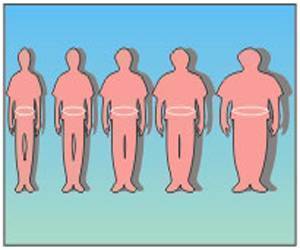The impact of obesity on medical costs is increasing in the U.S and varies from state to state. The health care costs vary due to a number of factors

‘The health care costs vary across states due to a number of factors like health care access by obese individuals and differences in obesity prevalence.’





"We have, for the first time, estimated the percentage of health care spending that is devoted to obesity, using microdata for each state," said Cawley, who co-authored "The Impact of Obesity on Medical Costs and Labor Market Outcomes in the U.S." with Adam Biener of the Agency for Healthcare Research and Quality and Chad Meyerhoefer of Lehigh University.Large differences exist across states, Cawley said. "In 2015, states such as Arizona, California, Florida, New York and Pennsylvania devoted five to six percent of their total medical expenditures to treating obesity-related illness, whereas North Carolina, Ohio and Wisconsin spent more than twice that - over 12 percent of all health care dollars in those states were used to treat obesity-related illness."
Overall, the authors found the percent of U.S. national medical expenditures devoted to treating obesity-related illness in adults rose from 6.13 percent in 2001 to 7.91 percent in 2015, an increase of 29 percent.
The publication reports results by payer type, including private health insurance companies, Medicare and Medicaid.
"Once again, we find dramatic differences across states in the fraction of Medicaid spending that is devoted to obesity-related illness," Cawley said.
Advertisement
By analyzing data for 2001-15 from the Medical Expenditure Panel Survey, a nationally representative survey of Americans' health care utilization and costs, the authors estimated the percent of health care costs that were associated with adult obesity for the most populous states.
Advertisement
Previous estimates of the health care costs of obesity by state were not based on microdata for each state but on assumptions about how national costs should be apportioned to different states.
These differences across states are driven by a number of factors, such as differences in obesity prevalence, health care access by obese individuals, how obesity is treated and prices of health care, Cawley said.
Source-Eurekalert














